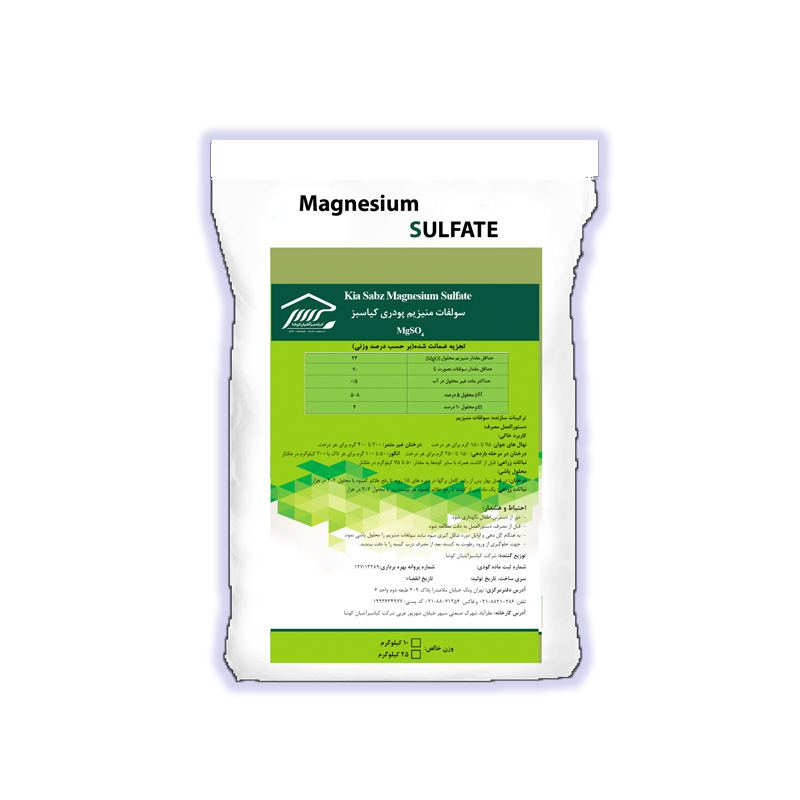
1400/11/29
Magnesium Sulfate 23%
MgSO4,xH2O
Magnesium is one of the macronutrients and plays an important role in chlorophyll formation and vegetative growth. Deficiency of magnesium in plants leads to reduce chlorophyll formation and leads to the slower growth of plant. Deficiency symptoms of magnesium are appeared in plant by yellow color between the veins of the old leaves. Deficiency of magnesium leads to reduce the plant resistant against cold and reduces the storage duration of fruits. Appearance of magnesium deficiency symptoms has a direct relationship with trees age. Magnesium is uptake by plants via soil solution like to calcium and potassium, and is dynamic in plant vice versa calcium and is transferred from old to young organs and its uptake by plant is depended on the its concentration in soil, magnesium saturation percent and concentration of the other cations such as calcium, ammonium and potassium in soil.
Magnesium sulfate is one of the most common fertilizers which used in agriculture and horticulture. It can be added the present fertilizer before planting to soil along with other fertilizers that leads to early germination and increase the protein in the products. This fertilizer is especially common in areas with high rainfall. Magnesium plays a positive role in increasing oil production in oil-producing trees, such as olive.
Application Method:
Product name |
Application case |
Application Dosage |
Application Time |
|
Magnesium sulfate |
Fruit trees |
200-300 g per tree |
Winter/digging hole |
|
Young trees |
150-200 g per tree |
Winter/digging hole |
|
|
Agriculture crops |
Depending on soil analysis |
Before planting |
Note:
It should be noted that using this fertilizer along with animal manure at root zone leads to increase its efficiency.
Caution:
It should not be sprayed this fertilizer during flowering and fruit set time.
Recommendation:
It should be used any fertilizer based on interpretation of soil test results and experienced experts.

